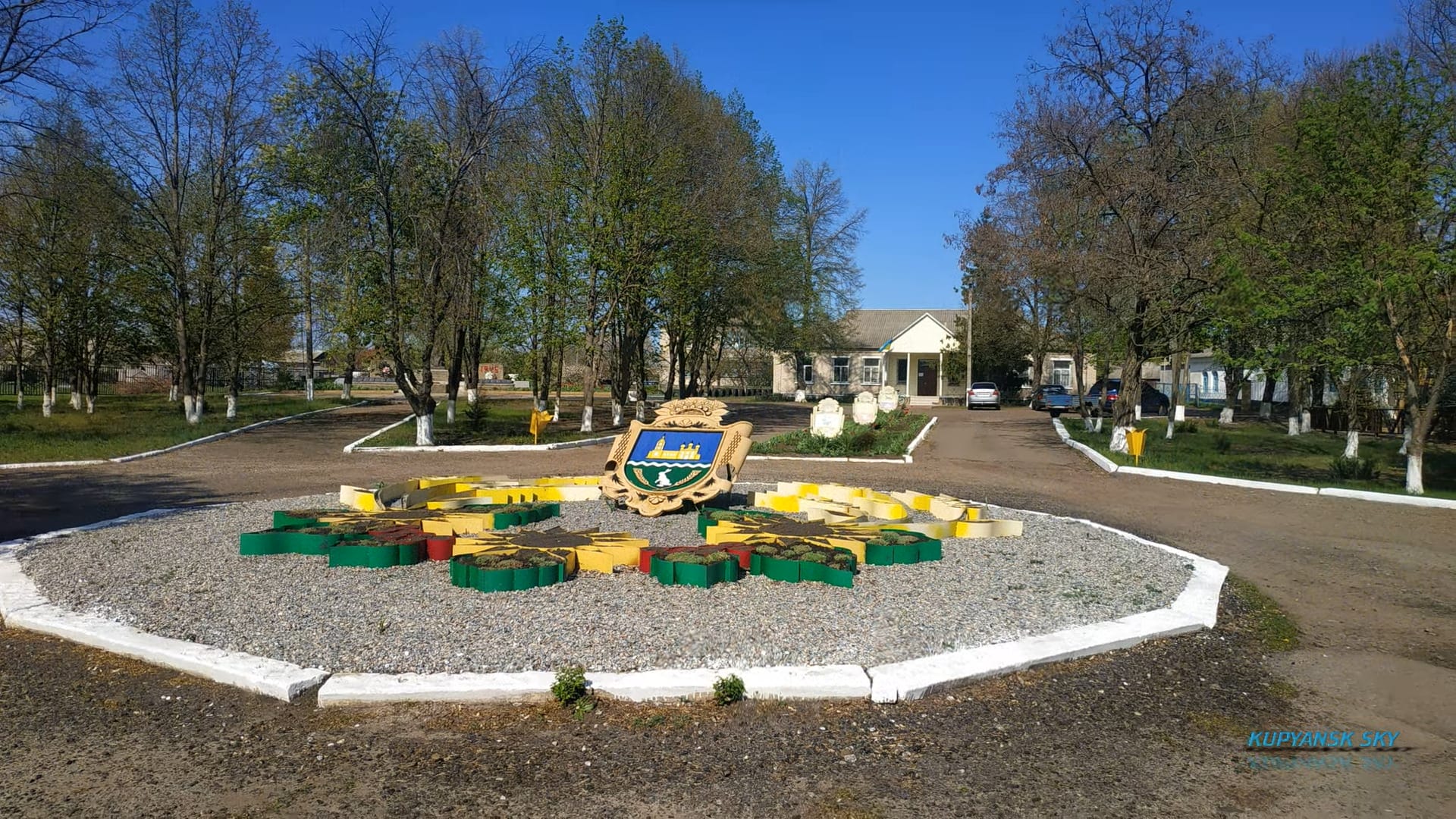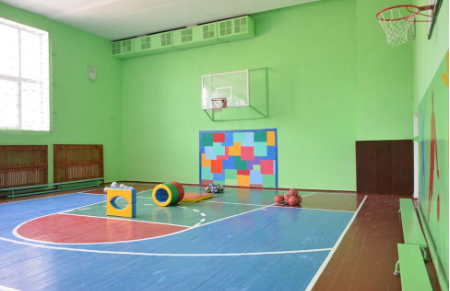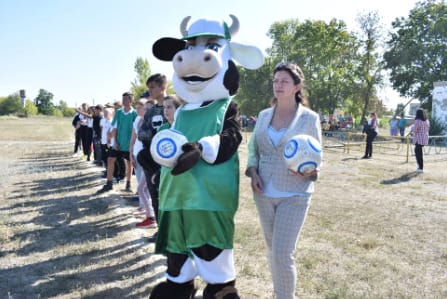This website uses cookies so that we can provide you with the best user experience possible. Cookie information is stored in your browser and performs functions such as recognising you when you return to our website and helping our team to understand which sections of the website you find most interesting and useful.
Petropavlivka Territorial Community

The Petropavlivka Community is a rural community in the Kupiansk District bordering the Luhansk Region. Its administrative centre is the village of Petropavlivka, which is located 120 kilometres away from the regional centre – the city of Kharkiv and 600 kilometres away from the capital of Ukraine – Kyiv.
The Petropavlivka Rural Territorial Community is located in the eastern part of Kharkiv Region. It was created in 2020 by uniting the Kyslivka, Pishchane and Yahidne Village Councils.
The Community includes sixteen villages. The surface area of the Petropavlivka Community amounts to 336.8 square kilometres.
Before the full-scale invasion, 4,927 residents lived in the Community.
Since 2014, the Community has provided shelter to 300 internally displaced persons. Currently, 482 people are staying in the territory of the Petropavlivka Community. The vast majority of the population left the Community for other towns of the Kharkiv Region. All the children have been evacuated to safe areas.
History
The newly created Community tried to preserve part of its historical past in local museums – local history and World War II museums. One of the main exhibits is the panorama of Petropavlivka created by local craftsmen. All these sites were destroyed by the russians during the occupation and shelling of the territory.

Petropavlivka began to be settled in 1682. At that time, it was the hamlet of Hnylytskyi, which took its name from the Hnylytsia River. The full-water river at its confluence with Oskil had a very quiet current. Because of this, its banks became swampy and “rotten”. As a result, peat was mined there in the 20th century. In the early 19th century, the hamlet grew so much that its inhabitants decided to buy a church in Kupiansk. It was named after the apostles Peter and Paul. In this way, the hamlet of Hnylytskyi became a sloboda called Petropavlivka.

Fairs were held there on the local church foundation anniversary, and later the settlement became the centre of the parish. After the railway track was built there in 1895, the peasants became railway workers and craftsmen. People wove baskets, and with the advent of the railway, they transported their goods not only to the district centre of Kupiansk, but also to Kharkiv.
In the 20th century, the Community experienced a number of administrative and territorial reforms, famine, collectivization and war.
Both in the current war with russia and during the Second World War, the fiercest battles were fought in the territory of Kyslivka.
The residents of the village of Pishchane engaged in sheep breeding and developed horse trade. Soldiers from Svatova Luchka (now Svatove) came to the fairs to replace their exhausted horses with more hardy mounts.
And the first settlers of the village of Yahidne were Cossacks from Zaporizhia Sich, who were impressed by the fertile lands generously strewn with wild strawberries. Having settled there, most of them were chumaks. And later, they began to grow beets there, which resulted in the construction of a sugar factory.
Attractive sites of the tourist infrastructure of the Petropavlivka Community include the recreation centre on the Vershyna pond, a nature reserve with a total surface area of 57 hectares, and the Krasne tract, where the Striletsky steppe of the Luhansk Region begins.
This is the only territory in Ukraine where a relict plant has been preserved en masse – a thin-leaved peony, popularly known as a larkspur, the flowers of which in May turn the entire steppe red.

Economy and Welfare
In the post-war years, six collective farms worked on the fertile soil of the Community, which were later merged into one Petropavlivske farm. It ceased its operations in the 1990s.
Due to the fact that the main attention was paid to agricultural production, the social infrastructure and housing stock of the localities fell into decline. Also, the Petropavlivka Community formed in 2020 had to restore everything that was lost.
Water towers were built and water mains were partially replaced, wells were cleaned and log cabins were renovated, bus stops were repaired, and garbage removal was organized in the largest localities. The total length of the water main in Petropavlivka is 12.5 kilometres and in the villages of Orlianka and Yahidne – 10 kilometres.
Clean-up days for cleaning the territory, organizing children’s and sports grounds, clearing roads from snow are common events that gather residents of the localities at different times of the year.
Summer parks and streets delighted the eye with greenery and flower arrangements. Newlyweds could register their marriage in the renovated modern hall and take photos near the fountain of lovers. Street lighting became available in all the villages.


At the beginning of the war, 412 students went to the Community’s two lyceums located in Kyslivka and Petropavlivka. Each of the institutions had units of preschool education that were attended by 153 pupils from 212 pre-schoolers registered in the Community. All the children had meals in educational and preschool institutions for free, at the expense of the local budget. Classrooms and recreation areas met the requirements of the New Ukrainian School Policy. The shooting range in the basement of the Petropavlivka Lyceum was renovated and decorated using patriotic themes.


The villages have provided conditions for sports. The stadium and sports grounds were always well maintained. In winter, people could have fun on the ice rink or work out in the modern gym. Children were raised to be hardened and patriotic.





The Community runs six clubs, five libraries and one culture centre. Artistic self-activities are developing, and the head of the Community, Olha Kozyreva, plays an active role in these processes.

Medical services were provided to people by five outpatient clinics of general family practice and five paramedic-midwifery centres.
About fifty medium-sized and small agricultural producers contributed to the Community budget in the form of taxes. The Petropavlivka Community’s land is rich in fertile black soil, clay, sand, water resources. Its moderate and continental climate, mild winter and warm summer contribute to the development of crop production.
Community and War
The damage caused by the russian-Ukrainian war to the Petropavlivka Community has not yet been calculated. For more than a year after the de-occupation, the Community has been under continuous shelling. Infrastructural facilities, housing, lyceum buildings, cultural and sports facilities, and trade pavilions have suffered significant destruction.





The patriotic bas-relief on the facade of the Petropavlivka Culture Centre was the most unnerving to the invaders and collaborators, and it was the first to be destroyed during the occupation, which began in the Community on 27 February 2022.


The russian authorities began to actively work in the villages of the Community starting from June 2022. At that time, farms managed to plant the crops, but the entire harvest of the past 2022 remained in the field.
During the occupation, people lived having access to no news from Ukraine, electricity, communication and the Internet. Pro-Ukrainian residents were taken to russian “basements” and subjected to merciless torture.
Some families left in their own cars through russia, Poland and the Baltic countries. However, this path was also very dangerous, because at the russian customs facilities Ukrainians were carefully checked to find out whether they belonged to the Armed Forces of Ukraine, and some were even detained. So the majority of the population did not take risks and waited for the de-occupation in their native homes.
The long-awaited liberation of the centre and most of the localities of the Petropavlivka Community took place on September 27, 2022. People rallied to help each other.
The first volunteers who arrived in the Community after de-occupation were natives of Petropavlivka, who brought aid to their relatives and evacuated children and bedridden patients from there.
People have been living without electricity and gas for a year. In the villages, poles and power grids are damaged, gas distribution substations are destroyed; specialists do not have access to them due to heavy enemy fire. Water towers and pumping stations are destroyed on the central water main. Mobile communications and the Internet remain unstable.
Proximity to the demarcation line and constant shelling of the localities made it impossible to work in the fields. In the spring of 2023, due to extensive field mining, no agricultural enterprise planted crops. In farms, warehouses and equipment are damaged.
The executive and financial departments of the Village Council resumed their work. Lyceums of the Petropavlovsk Community work online. Educators organize online lessons for more than 500 children.
People of the Community
The head of the Community – Olha Kozyreva, who has been elected by her fellow villagers as the head of the Petropavlivka Village Council four times, works in the destroyed territory.

During the occupation, she had to evacuate because the invaders, together with local accomplices, repeatedly insisted on cooperation, and after several weeks of the russian “basement”, the head of the Petropavlivka Community left the village to reach safety.
After the de-occupation, the President of Ukraine appointed Olha Kozyreva as the head of the Petropavlivka Rural Military Administration. Currently, the leader cooperates with volunteers who evacuate the population, delivers humanitarian aid, medicines, bread, and firewood to fellow villagers.

Together with her colleagues, the leader is preparing investment projects for the reconstruction of educational and cultural institutions, libraries, paramedic centres, administration premises and infrastructure. Top priority is the issue of demining the territory and enabling the agricultural enterprises and individual farmers to work, thus creating new jobs and helping people return to the Community.
Development Strategy
Priority areas of activities and tasks include:
- Demining the territory
- Development of a community reconstruction plan
- Creation of conditions for the return of residents and businesses to the Community.
- Modernization and reconstruction of housing and communal services.
- Repair of the premises of the Petropavlivka Village Council and the administrative building, recovery of the material and technical resources.
- Repair of the premises of the Petropavlivka and Kyslivka Lyceums, recovery of the material and technical resources.
- Renovation of the premises of paramedic centres and outpatient clinics, recovery of the material and technical resources, making them resume their work, creation of conditions for maximum availability of medical services to the population.
- Reconstruction of premises and re-launch of cultural and sports institutions.
- Purchase of buses for transportation of children to educational institutions.
- Social support of residents who have lost their jobs and their involvement in community reconstruction

List of Sources
- Collection of historical and cultural landmarks of Ukraine: Kharkiv Region.
Kupiansk and Kupiansk District. Encyclopaedic edition
- Kupiansk area in history; Kuksa M. F.
- Visnyk Kupianshchyny newspaper
- Website https://kupiansk.city
